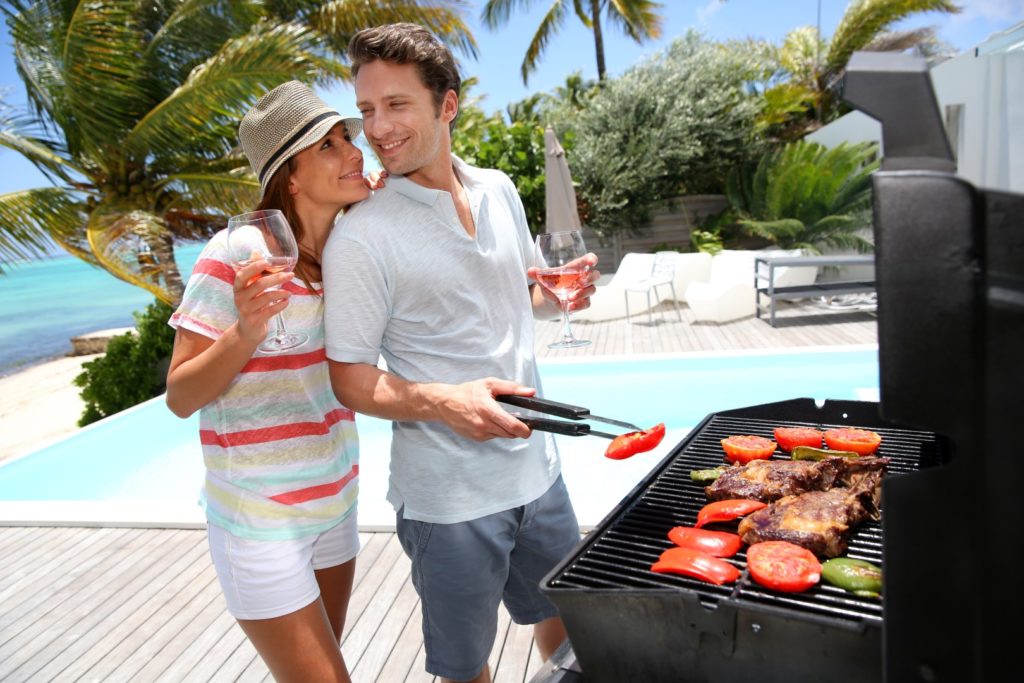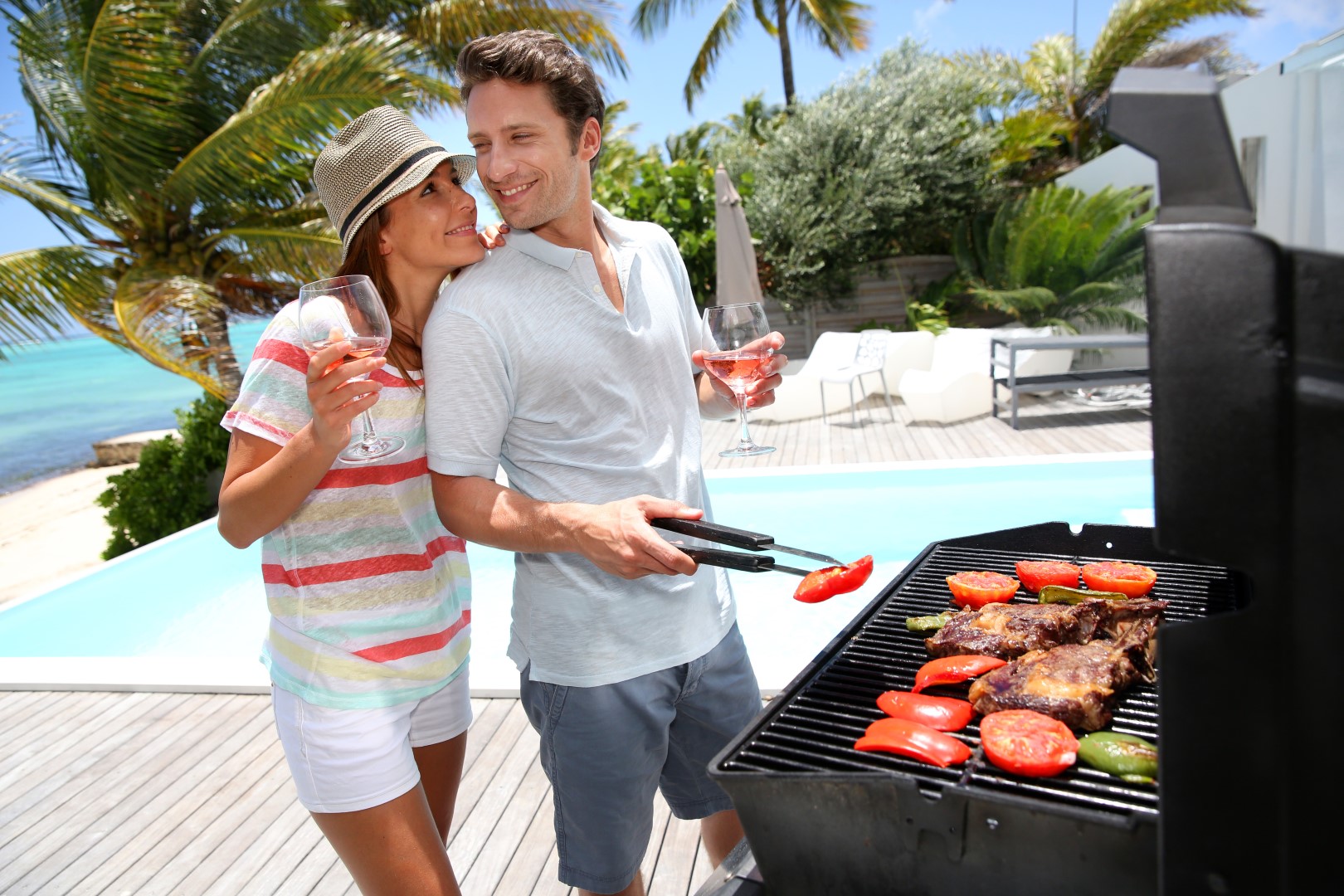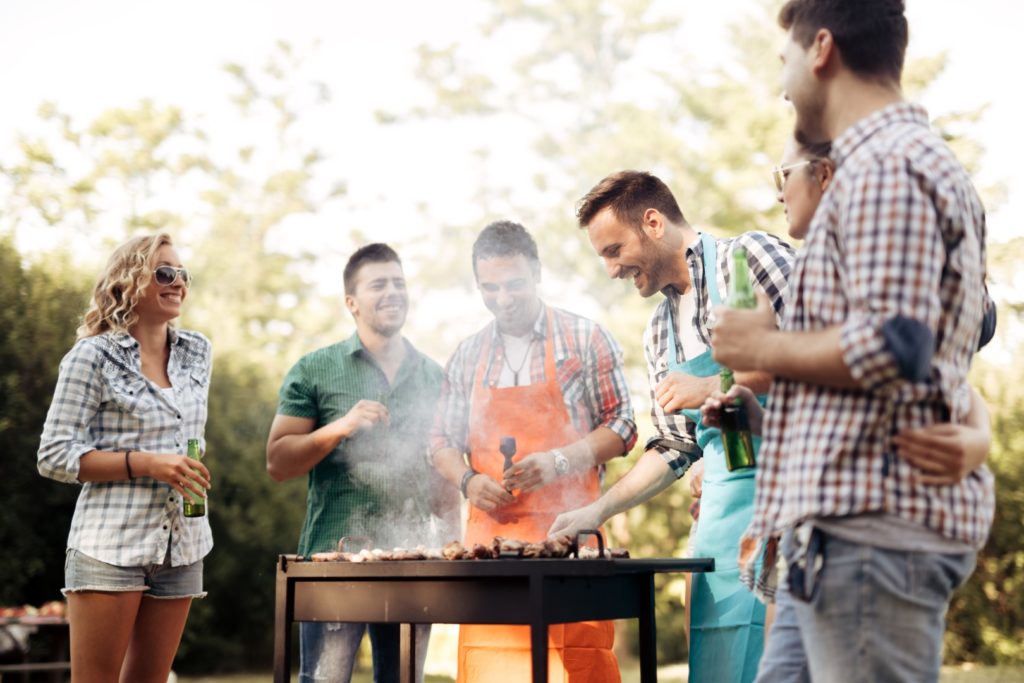
Whether you’re a grill master or buying your first barbecue, knowing what to look for is key if you want your food to have that authentic outdoor flavour. Now that doesn’t mean you have to spend a fortune, but you do have to keep certain principles in mind if you want to get the most from your grill. With so many options out there, it’s easy to get confused, but with my help, you’ll be able to find the perfect BBQ for any budget.
You’ve got the apron, you’ve got the spatula and with that perfect barbecue, you’ll finally be ready to take your place as King (or Queen) of the backyard!
So let’s get started.
Fuelling the Fire
One of the first questions you’ll get when shopping for an outdoor grill is what type of fuel do you want to cook with? If you’re just starting out or looking for portability than propane may be the way to go. Like natural gas, propane burns cleaner than charcoal and is easier to control. If you’re looking for a more permanent set up, then natural gas barbecues are fuelled directly from your home gas line and require less maintenance than propane tanks.
If you want to stay away from gas, then charcoal or wood chips burning grills are your best bet. Although they take a little longer to cook, charcoal and chips are both available in a wide variety of flavours and are still the easiest way to maximize that smoky barbecue flavour.
Cooking Power vs. Cooking Efficiency
When talking about outdoor cooking, there’s nothing more seductive than power. A barbecue’s heat generation is measured in BTUs (British Thermal Units) and determines how hot the burners will operate. Most consumer grills fall within 25,000 and 60,000 BTUs depending on the size, the model, and the manufacturer of the machine.
That said, power isn’t everything. It’s much more important to cook efficiently with the heat you are generating, and a well-made 25,000 BTU cooktop will cook better than an inefficient 40,000 BTU model. Look for a good burner system with even heat distribution, a vapourizer system that covers the full width of the cooktop, and heavy cast iron or stainless steel grates that retain more heat. Price matters here, and expect to pay more for a more efficient machine.
When Size Matters
Most people barbecue to feed their immediate families. For the average consumer, a 400 – 600 cubic inch area will easily feed 8 people or more. A good rule of thumb is that a small grill will cook 18 burgers, a mid-size grill will cook 28, and a large grill will cook 30 and up.
If space is tight, make sure you measure your BBQ area before you buy. And remember that warming zones and side burners allow you to expand your usable cooking space without a huge size upgrade. If you do purchase a smaller grill, lean towards one with a distinct burner system so you don’t have to sacrifice versatility or the ability to cook with indirect heat.
Built to Last… or Not So Much
In addition to improved efficiency, a well-made barbecue is going to last longer, requires less maintenance, and will be safer than entry-level machines. When you’re inspecting a grill ask the sales professional what it’s made of. At the lower end, most barbecues are made of some combination of painted sheet metal and cast iron compared to stainless steel and cast aluminum in more expensive machines.
The ideal cooking surface should be one seamless piece of cast or welded metals. And the thicker the better. Carts should feel sturdy, and like a good cooktop, you want to find one that’s welded together instead of one constructed with nuts and bolts.
Finally, what are the grates made of? Cast iron and stainless steel grates will both give you great sear marks but expect stainless steel grates to last a lot longer. Cast iron grates will also require more maintenance, although porcelain coated options are less time consuming. Whatever material you’re considering, make sure you test the weight of the grates. Lighter grates may be hollow, or of inferior construction, and therefore less durable and effective than a grate with some heft.
Grilling Accessories
Once you’ve got the basics down, you can start expanding your cooking experience. Side burners, smoke trays, rotisserie kits, and sear burners are all upgrades to consider if you want to expand the versatility of your grill.
If you really want to take the next step, then consider a full outdoor kitchen. A built-in grill with an independent side burner, outdoor refrigeration including an ice cold beer dispenser is every summer entertainer’s dream.
But whatever your dream, just keep these handy tips in mind when you’re buying a barbecue and you’ll be grilling to perfection in no time.
Isabelle, Your Appliance Expert


